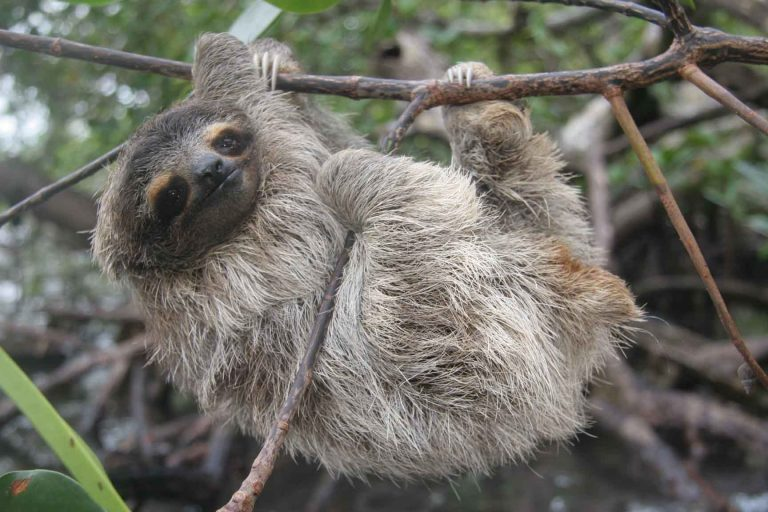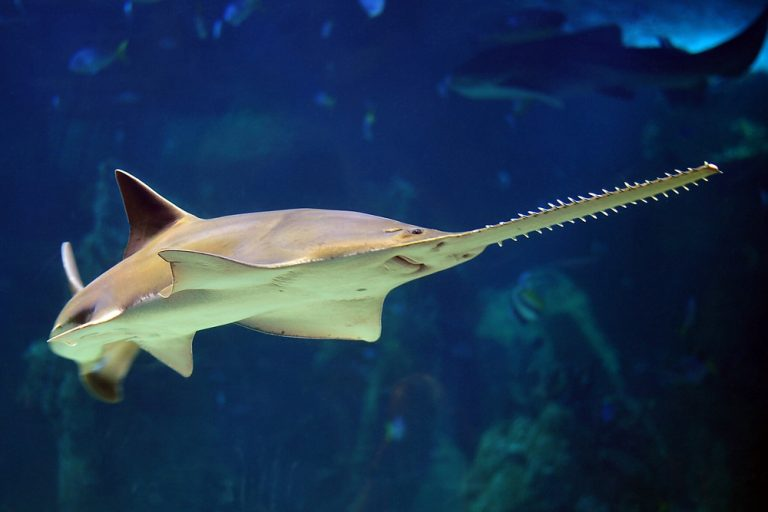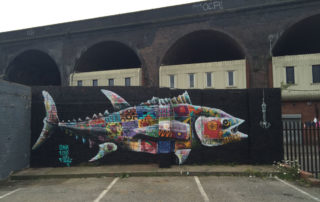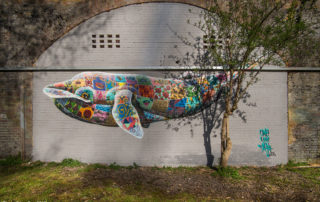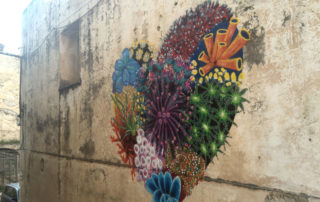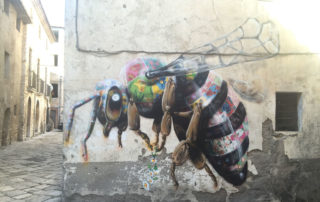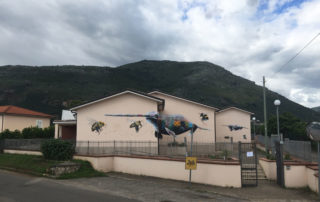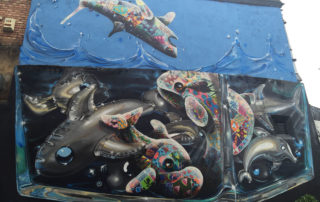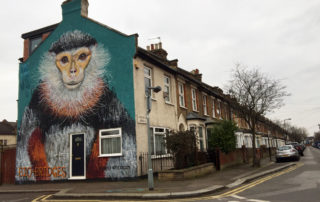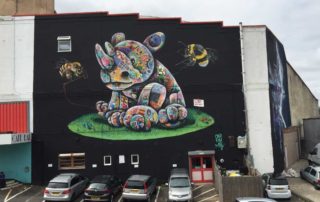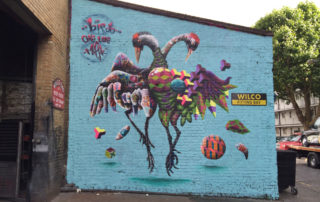Project Description
Who is Louis Masai?
Louis Masai is a London-based multi-disciplinary contemporary artist. His subject matter focuses on endangered species, giving the voiceless a greater stature. Masai “focuses on animals but always strives to find a human reference to juxtapose an element that might not be previously obvious.” Visitors to the zoo can observe Louis in action between 5th-20th July!
Louis’s recent shows include ‘Last of my kind’, a project about endangered bird species which intends “to question why humans often fail to recognise a disappearing species yet mourn the death of a celebrity.”
To find out more about Louis Masai’s work, check out his personal website.
What is an EDGE species?
Using a scientific framework to identify the world’s most Evolutionarily Distinct and Globally Endangered (EDGE) species, ZSL’s EDGE of Existence programme highlights and protects some of the most unique and most wonderful species on the planet. EDGE species have few close relatives on the tree of life and are often extremely unusual in the way they look, live and behave, as well as in their genetic make-up. They represent a unique and irreplaceable part of the world’s natural heritage, yet an alarming proportion are on the verge of extinction.
Why is this happening at the zoo?
ZSL’s EDGE of Existence programme has recently passed their 10th anniversary, and in celebration, they’ve teamed up with Louis Masai and conservation charity Synchronicity Earth to celebrate #ConservationOptimism at ZSL London Zoo. Louis is painting murals featuring some very special EDGE species using his unique patchwork style to convey some of the complex relationships between humans and nature and the challenges faced by these animals. The EDGE species included in the mural have all been the focus of conservation work by ZSL, and are examples of conservation success stories or positive conservation action underway.
What will Louis be painting?
Louis’s murals will contain six animals from the EDGE species list, five of which are listed as critically endangered by the IUCN Red List.
- The Lake Oku clawed frog is a small, entirely aquatic frog found only in a single 243-hectare lake on Mount Oku, Cameroon. The frog has become threatened in its tiny habitat, with the introduction of fish into Lake Oku and the degradation of surrounding areas amongst the threats.
- The Green sawfish is a large species of sawfish, with an average length of six metres. Having previously ranged across the entire Indo-Pacific Ocean, the Green sawfish’s distribution has rapidly declined due to fishing, largely for use in Asian medicines, and habitat loss.
- The Philippine Eagle is known for its size, plumage and wide-ranging diet, living off species such as lemurs, monkeys, civets, bats, pigs, monitor lizards and even other birds of prey. Despite being the Filipino ‘National Bird’, the eagle is severely threatened by widespread habitat destruction.
- The Gharial exists in regions of India and Nepal, and is unmistakeable with its distinctive elongated jaws, used for catching fish. The Gharial is threatened by a wide range of developments such as hunting, decline in fish populations and reduced habitat.
- Pygmy three-toed sloth are found exclusively on the small island of Escudo de Veraguas, near Panama. An arboreal species, they are threatened by habitat destruction, reliant on an area of red mangroves spanning just 4.3 square kilometres.
- The Olm salmander is Europe’s only cave-dwelling vertebrate, and has numerous unique adaptations for an underground life. Olms are pale and sightless, although their skin-covered eyes are still sensitive to light, despite spending their entire lives in caves. Incredibly, the olm can survive without food for up to a decade!
Why are we using art to celebrate conservation?
Synchronicity Earth is a conservation charity that acts to address overlooked and underfunded conservation challenges for globally threatened species and ecosystems. Art is a really important way to get people thinking about new things and discussing them with each other. Synchronicity Earth has worked with Louis since the 2014 campaign This is Now, which brought to life UK species and highlighted the growing threats faced by much-loved species, such as the hedgehog and house sparrow. The campaign was designed to bring awareness of The IUCN Red List of Threatened Species, and was very effective at sparking people’s curiosity!
What is Conservation Optimism?
Often when we see stories about wildlife in the news, the headlines are scary and sad. The truth is that there are a lot of challenges being faced by the world’s ecosystems and many species are under threat. However, the “doom and gloom” narrative only tells part of the story. There are many ways that conservationists around the world are helping species and succeeding efforts both small and large! #ConservationOptimism is a global community dedicated to inspiring and empowering people around the world to make a positive difference for nature.
Who can be a “conservationist”?
Close your eyes and imagine a conservationist. What did you see? Did you imagine a scientist in a lab or a zoo, or perhaps a field biologist wearing khaki trousers in a jungle? Well, the fact is that everyone can (and should!) be a conservationist. A conservationist is someone who cares about the environment and the animals, plants, and insects that share our planet with us, and who works to protect them in their own way. The planet needs all of us to be conservationists. Are you a conservationist? Share a selfie on the hashtag #IamAConservationist and find other students, teachers, mums, lawyers, engineers, baristas, grannies, dentists, builders, footballers, dancers, artists, and people of every kind who are working along with you to conserve wildlife.
How can I get involved?
If you’re looking for inspiration beyond Louis’s murals at London Zoo between 5th-20th July, there are plenty of ways that you can get involved with conservation efforts!
Social media is often a good place to share your passion for conservation. If you want to spread a message on Twitter about the importance of conservation, use hashtags such as #IAmAConservationist, #ConservationOptimism and #OneLess, a project started by ZSL to reduce plastic bottle pollution, to get involved online.
The Zoological Society of London runs multiple projects to help engage people passionate about conservation, such as their ‘citizen science’ campaign to preserve London’s rivers, open to all volunteers over the age of 16 who are enthusiastic about protecting London’s marine environment.
The 21st-29th July will be the first ever London National Park City Week, with events being held all across the capital to encourage Londoners to engage with the outdoors and make the city greener. The project is led by the Mayor of London and the National Park City Foundation. If you want to become involved in events or just find out more, a briefing will be held on Wednesday 11th July.
If you want to use your employment skills to practically participate in conservation movements, you could consider joining an active volunteer group such as the Key Conservation Skilled Impact Network, built on the premise that “no matter what you do for a living you can use it to help conservation efforts”.
Meanwhile, if you have your own inspiring story to share of conservation success, large or small, you can send it to us for publication on the website via the Conservation Optimism Stories section. Conservation movements are reliant on donations, so any funds you could provide would make a huge difference.

